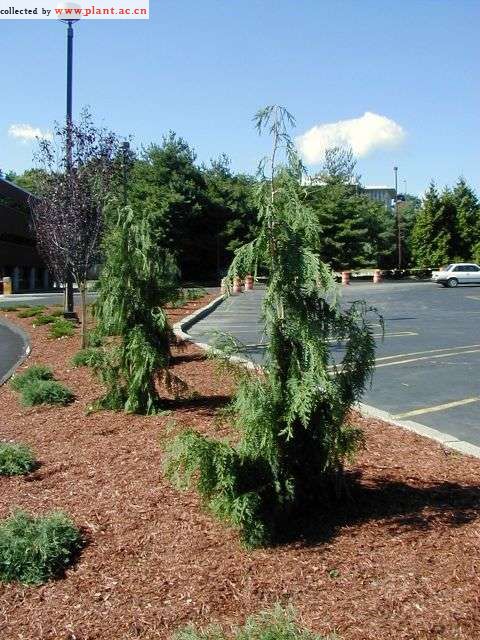Chamaecyparis nootkatensisNootka cypress
科:柏科
Family:Cupressaceae
属:扁柏属
common name:Nootka cypress
introduce:Plant Type: Needled evergreen
Family: Cupressaceae
Missouri Native: No
Native Range: Alaska to northern California
Height: 40 to 90 feet
Spread: 15 to 25 feet
Bloom Time: Non-flowering
Bloom Color: Non-flowering
Sun: Full sun to part shade
Water: Medium moisture
Maintenance: Medium
General Culture:
Grow in average, medium wet, well-drained soils in full sun to part shade. Best in full sun. Prefers moist, fertile soils. Avoid wet, poorly-drained soils. Best performance may be in moist, cool summer climates, but also has performed very well in the lower Midwest.
Noteworthy Characteristics:
Nootka cypress or Alaska-cedar or yellow cypress is native to moist soils in bottomlands, along streams and in ravines along the Pacific Coast from southeastern Alaska to northern California. Trees grow very slowly and live for 1000+ years. Drooping sprays of small scale-like bluish-green leaves. Rounded seed cones to 1/2?diameter. Bark is gray and peels in loose scales. Trunk is buttressed at the base. Although it may grow from 60-90?tall in the wild, it usually grows much shorter in home landscapes. Although the native species is rarely grown far from its native habitat, C. n. 慞endula?is a compact weeping form that is much more common in eastern North America. This species was reportedly found by A. Menzies in Nootka Sound in 1793.
Problems:
No known serious insect or disease problems. Plants in the genus Chamaecyparis generally have some susceptibility to juniper blight, root rot and certain insect pests such as bagworms.
Uses:
Landscape specimen.
